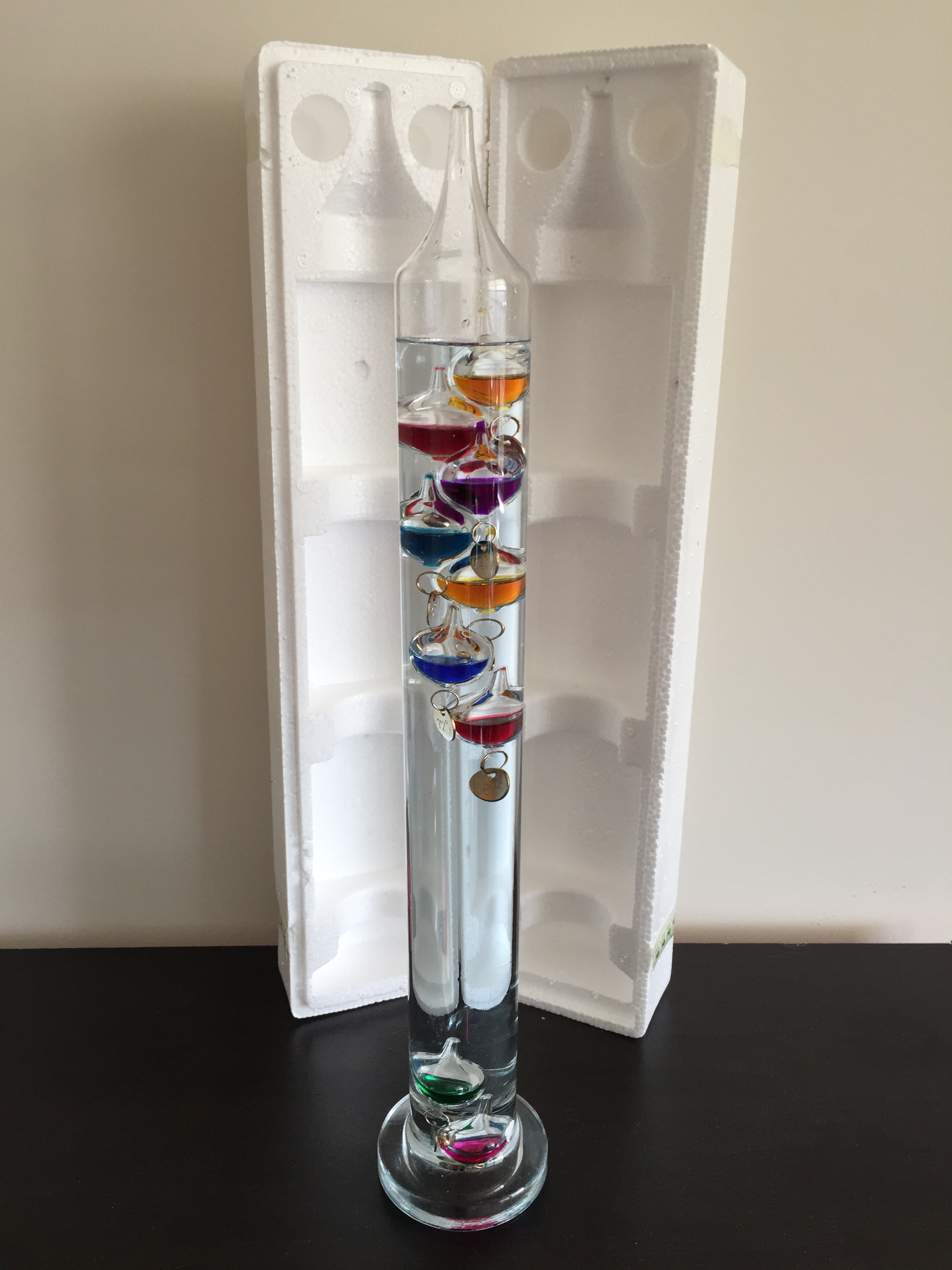Galileo’s thermometer consisted of water in a glass bulb. If there isn’t a bulb within the hole (Figure 4, right) then the common of the values of the bulb above and beneath the hole offers the approximate temperature. As the temperature of the water fluctuates, so does its density, which in direct opposition to the best way the temperature affects it, decreases, as the density rises and increases as the density will get decrease. So the density is just a little less than that of solely water. 9) Turn the Storm Glass back to its upright position and set it on a flat floor.The water needs to be about 1″ up the spout of the Storm Glass. Inject air into the chamber.Water will rise up the spout and may overflow.
 If the water just isn’t at this stage, fill the syringe with air and insert the filling tube again into the top of the water chamber. The liquid contained in the thermometer is water blended with ethanol. Students can use the thermometer to collect information to supply evidence for the way changes in weather could happen. Equivalent to, underneath direct sunlight the liquid of the spheres may experience some chemical modifications. Utilized by chemists for the exact measurement of temperature adjustments caused by reactions. I unpacked it, placed it on my desk, and watched the globes rise up in sequence as the liquid cooled all the way down to room temperature. The tube ought to go fully down the spout and cease at the highest of the glass chamber. 5) Insert the injection tube into the spout of the Storm Glass.
If the water just isn’t at this stage, fill the syringe with air and insert the filling tube again into the top of the water chamber. The liquid contained in the thermometer is water blended with ethanol. Students can use the thermometer to collect information to supply evidence for the way changes in weather could happen. Equivalent to, underneath direct sunlight the liquid of the spheres may experience some chemical modifications. Utilized by chemists for the exact measurement of temperature adjustments caused by reactions. I unpacked it, placed it on my desk, and watched the globes rise up in sequence as the liquid cooled all the way down to room temperature. The tube ought to go fully down the spout and cease at the highest of the glass chamber. 5) Insert the injection tube into the spout of the Storm Glass.
8) Remove the injection tube from the Storm Glass. The spheres may even be attached to a base or suspended by a stand, not not like those with some glass whiskey decanters. If you’re sure about its fault so wondering why the spheres aren’t sinking, put it into a beaker filled with sizzling water. 7) Slowly inject the coloured water into the Storm Glass till it’s about half full (shown below). Turn the Storm Glass the wrong way up. Gently tap on the glass and it ought to untangle them. 1. Galileo thermometer2. Glass barometer3. Galileo Galilei, the infinitely talented scientist and astronomer (and all spherical rebel of the 15th century), discovered the precept that supplied us the first accurate reading of ambient temperature. Galileo thermometers had been launched within the seventeenth century. The studying of the atmospheric temperature is very easy on these Galileo thermometers. Do not forget that reading a Galileo thermometer isn’t like rocket science. As we have already got mentioned earlier, the temperature studying isn’t very correct with this software.
When you buy one in the present day you’ll discover that there isn’t only one shape accessible anymore however many alternative designs ranging from traditional wanting timepieces featuring hourglasses inside them for telling time by barometric strain readings to extra modern types made out of stainless steel and resin elements measuring wind speed too! But right here at Caterpickles, we imagine that the simplest street isn’t always the best street, even when Math is involved, so here’s the math behind those temperature conversion instruments. This may elevate the temperature of the liquid causing to lower in density.
- 投稿タグ
- Galileo
